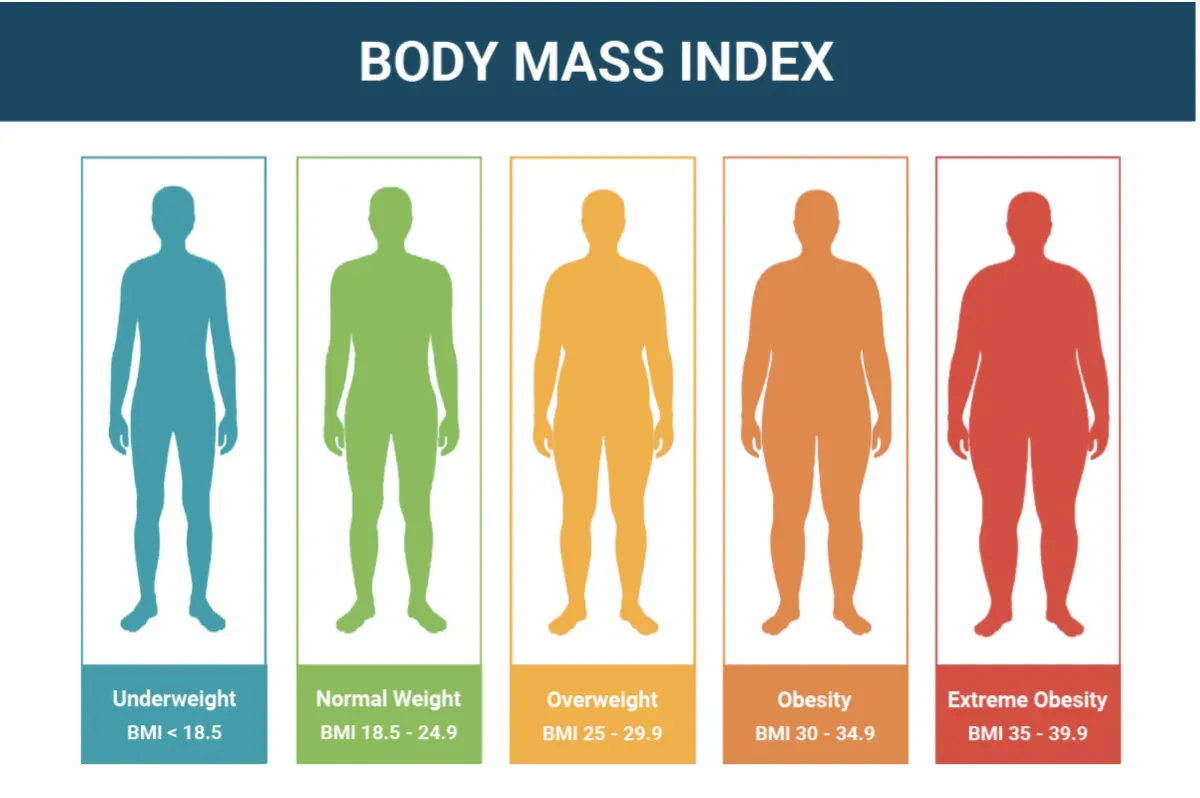
Goodbye BMI! This Measurement Makes SO Much Sense!
We've known for a long time that the Body Mass Index (BMI), based on one's height to weight, was a faulty way to determine health risk or obesity.
Its greatest failing is that it doesn't differentiate between muscle and fat.
👉 Athletes typiclly have a high BMI, while unfit people with low muscle mass might score in a healthy range.
👉 People of the same BMI, age, and sex might have body fat percentages ranging from 10% to 40%.
👉 One study reported that BMI found nearly half of participants deemed overweight and nearly a third deemed obese were actually healthy.
👉 On the flip side, 30% of those whose BMI was deemed healthy were actually in poor metabolic health.
👉 BMI doesn't take into account ethnic variations. Asians and those of Asian descent, for instance, have a pattern of central obesity that puts them at high risk for Type 2 diabetes, even at lower B.M.I. scores.
If you watched the Olympics, you may have seen American rugby player Ilona Maher who has a BMI of 30, the edge of obesity. “But alas,” she said on Instagram, addressing those who trolled her about her weight, “I’m going to the Olympics and you’re not.”
Height to waist instead of height to weight
The body roundness index (BRI) is based on the ratio of height and waist circumference.
Abdominal fat is a more accurate predictor of mortality, linked to increased risk of developing Type 2 diabetes, hypertension, and heart disease.
Fat stored on the hips and thighs isn't linked to increased disease risk.
Visceral fat, stored in the abdominal cavity, is particularly linked to insulin resistance and glucose intolerance that often precede Type 2 diabetes. It's also associated with high blood pressure and lipid abnormalities that can lead to heart disease and death.
BRI scores generally run from 1 to 15. Most people rank between 1 and 10.
Those with BRI scores of 6.9 and up — the roundest bodies — are at the highest risk of dying from cancer, heart disease, and other illnesses.
Interestingly, the least round individuals are also at elevated risk of death.
People with BRI scores under 3.41 had a mortality risk 25% higher than those in the midrange.
The lower score might be a red flag. Seen mostly in those 65 and older, it could reflect malnutrition, muscle atrophy, or inactivity.
Want to try it?
Go here to try a free BRI calculator.
It's time for people to stop thinking they're "too heavy" without regard to where that weight comes from.
Having more muscle and bone is great!
Instead of focusing on a number on the scale, pay attention to what's being weighed!